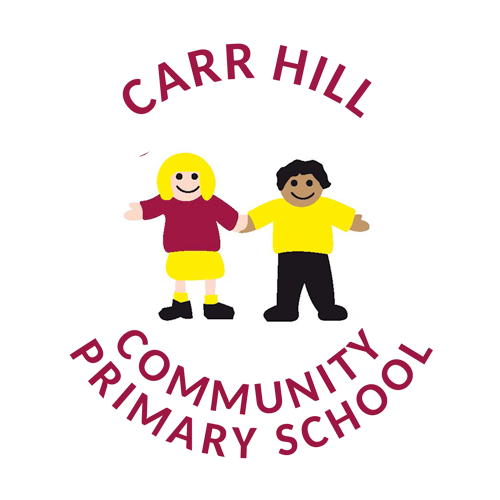Mr McGreevy leads the teaching of Computing in School.
Our Intent for Computing
Computers are now part of everyday life. For most of us, technology is essential to our lives, at home and at work. ‘Computational thinking’ is a skill children must be taught if they are to be ready for the workplace and able to participate effectively in this digital world. The national curriculum for computing has been developed to equip children with the foundational skills, knowledge and understanding of computing they will need for the rest of their lives. Through our school programme of study for computing, children will learn how computers and computer systems work, they will design and build programs, develop their ideas using technology, create a range of content and understand how to stay safe and be responsible in a digital world.
Our Implementation for Computing
In Early Years practitioners provide a rich environment in which children can build up an understanding of the world through play. Children are encouraged to be curious about technology in real world contexts through role play and natural discussions which help the children make sense of their world. From Year 1 onwards, computing is taught as a discrete weekly subject. Having discreet lessons means that the children are able to develop depth in their knowledge and skills over the duration of each of their computing topics.
Here at Carr Hill we follow the ‘Teach Computing’ curriculum. The Teach Computing Curriculum uses the National Centre for Computing Education’s computing taxonomy to ensure comprehensive coverage of the subject. This has been developed through a thorough review of the KS1–4 computing programme of study, and the GCSE and A level computer science specifications across all awarding bodies. All learning outcomes can be described through a high-level taxonomy of ten strands, ordered alphabetically as follows: Algorithms/Computer networks/Computer systems/Creating media/Data and information/Design and development/Effective use of tools/Impact of technology/Programming/Safety and security.
The taxonomy provides categories and an organised view of content to encapsulate the discipline of computing. Whilst all strands are present at all phases, they are not always taught explicitly.
We have also invested heavily to ensure that children have access to a wide range of technology to support their learning and development such as iPads, laptops, PC’s, digital cameras, recording devices, Apple TV, Promethean Activ Panel boards and a range of supporting software and apps.
The Impact of Computing
Computing skills are a major factor in enabling children to be confident, creative and independent learners who can thrive and contribute in an ever-changing digital world. It is our intention that children have every opportunity available to allow them to achieve this. Therefore, by the end of their time with us here at Carr Hill we aim to ensure that all pupils;
Are confident using code and can understand and apply the fundamental principles and concepts of computer science, including logic, algorithms and data representation
When coding, pupils can analyse problems in computational terms, and have repeated practical experience of writing computer programs in order to solve such problems
Effectively communicate, evaluate and apply information technology, including new or unfamiliar technologies, analytically to solve problems
Able to connect with others responsibly and are competent, confident and creative users of information and communication technology
Purpose of Study
A high-quality computing education equips pupils to use computational thinking and creativity to understand and change the world. Computing has deep links with mathematics, science and design and technology, and provides insights into both natural and artificial systems. The core of computing is computer science, in which pupils are taught the principles of information and computation, how digital systems work and how to put this knowledge to use through programming. Building on this knowledge and understanding, pupils are equipped to use information technology to create programs, systems and a range of content. Computing also ensures that pupils become digitally literate – able to use, and express themselves and develop their ideas through, information and communication technology – at a level suitable for the future workplace and as active participants in a digital world.
Aims
The national curriculum for computing aims to ensure that all pupils:
- can understand and apply the fundamental principles and concepts of computer science, including abstraction, logic, algorithms and data representation
- can analyse problems in computational terms, and have repeated practical experience of writing computer programs in order to solve such problems
- can evaluate and apply information technology, including new or unfamiliar technologies, analytically to solve problems
- are responsible, competent, confident and creative users of information and communication technology
Subject content
Key stage 1
Pupils should be taught to:
- understand what algorithms are, how they are implemented as programs on digital devices, and that programs execute by following precise and unambiguous instructions
- create and debug simple programs
- use logical reasoning to predict the behaviour of simple programs
- use technology purposefully to create, organise, store, manipulate and retrieve digital content
- recognise common uses of information technology beyond school
- use technology safely and respectfully, keeping personal information private; identify where to go for help and support when they have concerns about content or contact on the internet or other online technologies
Key stage 2
Pupils should be taught to:
- design, write and debug programs that accomplish specific goals, including controlling or simulating physical systems; solve problems by decomposing them into smaller parts
- use sequence, selection, and repetition in programs; work with variables and various forms of input and output
- use logical reasoning to explain how some simple algorithms work and to detect and correct errors in algorithms and programs
- understand computer networks, including the internet; how they can provide multiple services, such as the World Wide Web, and the opportunities they offer for communication and collaboration
- use search technologies effectively, appreciate how results are selected and ranked, and be discerning in evaluating digital content
- select, use and combine a variety of software (including internet services) on a range of digital devices to design and create a range of programs, systems and content that accomplish given goals, including collecting, analysing, evaluating and presenting data and information
- use technology safely, respectfully and responsibly; recognise acceptable/unacceptable behaviour; identify a range of ways to report concerns about content and contact
Progression Steps
Below are links to Carr Hill’s knowledge progression steps for each year group:
Computing Progression Steps Year 1
Computing Progression Steps Year 2
Computing Progression Steps Year 3
Computing Progression Steps Year 4
Planning
Computing Knowledge Organiser
Year 1
Year 2
Year 3
Year 4
Year 5
Year 6

